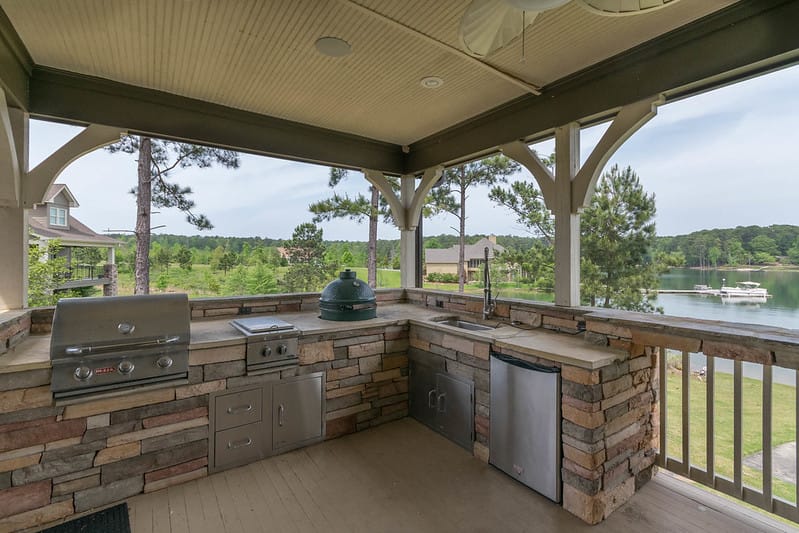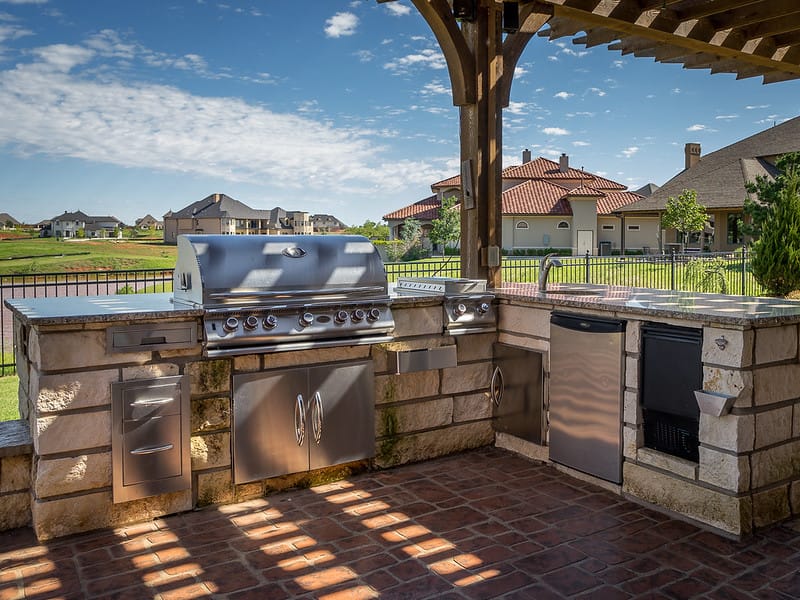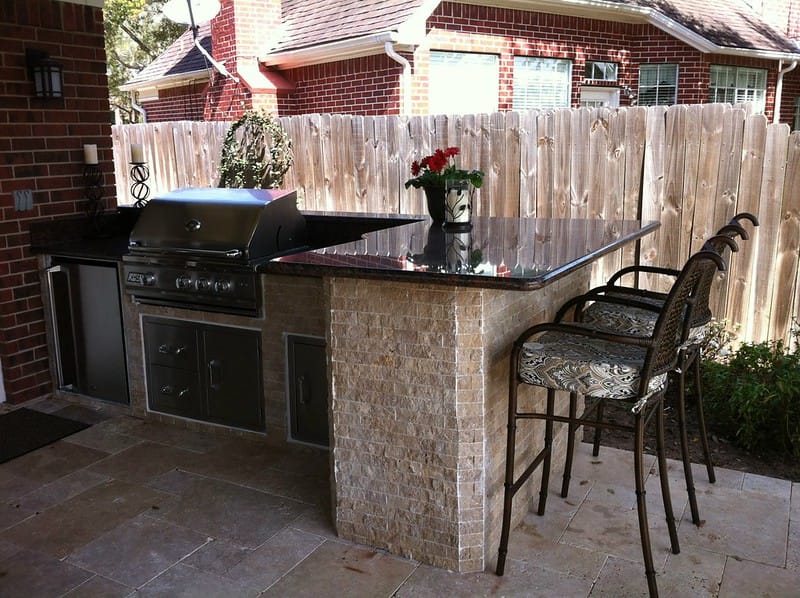How to Design Your Outside Kitchen for Maximum Appeal

Building an outdoor kitchen is a challenging task. In the homebuying business, certain renovations increase the resale value of your home but require upfront investment. An outdoor kitchen is a project that could add appeal to your home.
I installed an outdoor kitchen at my home last year. Although I was initially hesitant, some research and professional advice helped cement the decision.
While this project isn’t exactly an inexpensive home improvement, the benefit is returned in relaxation and an increase in the resale value of your home.
What’s Needed for an Outside Kitchen?
Certain aspects, such as location, permits, and materials, are a must for an outdoor kitchen.
Location
“What would be the appropriate location, Alex?” An outdoor kitchen should be in proximity to the home’s indoor kitchen. This is primarily to maintain ease in circulation. You should also consider outdoor electrical outlets, as certain appliances require them.
Layout

Deciding on a layout partially depends on your cooking style. Do you like to barbecue? Bake? Experiment with different recipes and ingredients? Typical outdoor kitchens offer counter space, storage, cooking utensils, and appliances — your space can be as complex or as simple as your vision.
Budget
It’s easy to get carried away when it comes to saying “yes” to the things we want, but creating a reasonable budget with a margin for rising costs and availability will keep your project in check. A budget determines the types of materials and appliances to choose.
If you cannot pay for the entire project upfront, you can borrow money with a home equity loan or home equity line of credit. Stay within reality – it is easy to overspend when planning a dream space. Build for a good return on investment.
Permits
Local building codes come into play when designing an outside kitchen. In most cases, you don’t need a specific permit for an outdoor kitchen. However, consider plumbing works.
Certified electricians and plumbers will handle permits and other code requirements. Wiring and plumbing are not DIY projects. If you want the job done right and up to code, hire a professional!
Materials

Choose weather-resistant, durable materials that blend in with your home’s overall décor. For example, granite, natural stone, and concrete are good options for countertops. The best luxury countertops, like marble or quartz, offer a high-end look while providing exceptional durability. Stainless steel cabinets ward off rain and snow.
Wood is nice, but it requires extensive sealing and polishing to prevent warping and swelling, plus it can attract termites in Pennsylvania.
Appliances
Go “smart” with an oven that heats up with a tap of an app on your phone. Grills heat with electricity, gas, charcoal, and propane. Cooktops include burners, side burners, and griddles. How about adding a pizza oven?
Storing food in a standard-sized refrigerator-freezer keeps you from having to run back and forth into the house.
Summary
Outdoor kitchens are now more popular than before, but homeowners are still skeptical about the investment involved. And to be honest, outdoor kitchens aren’t for everyone. I have one and I use it often, but that’s because of my lifestyle. Had I been in a situation where the upfront investment was not worth the return, I too would be skeptical.
Before you decide, consult a real estate professional to get clarity on the resale value an outdoor kitchen could offer for your home.
